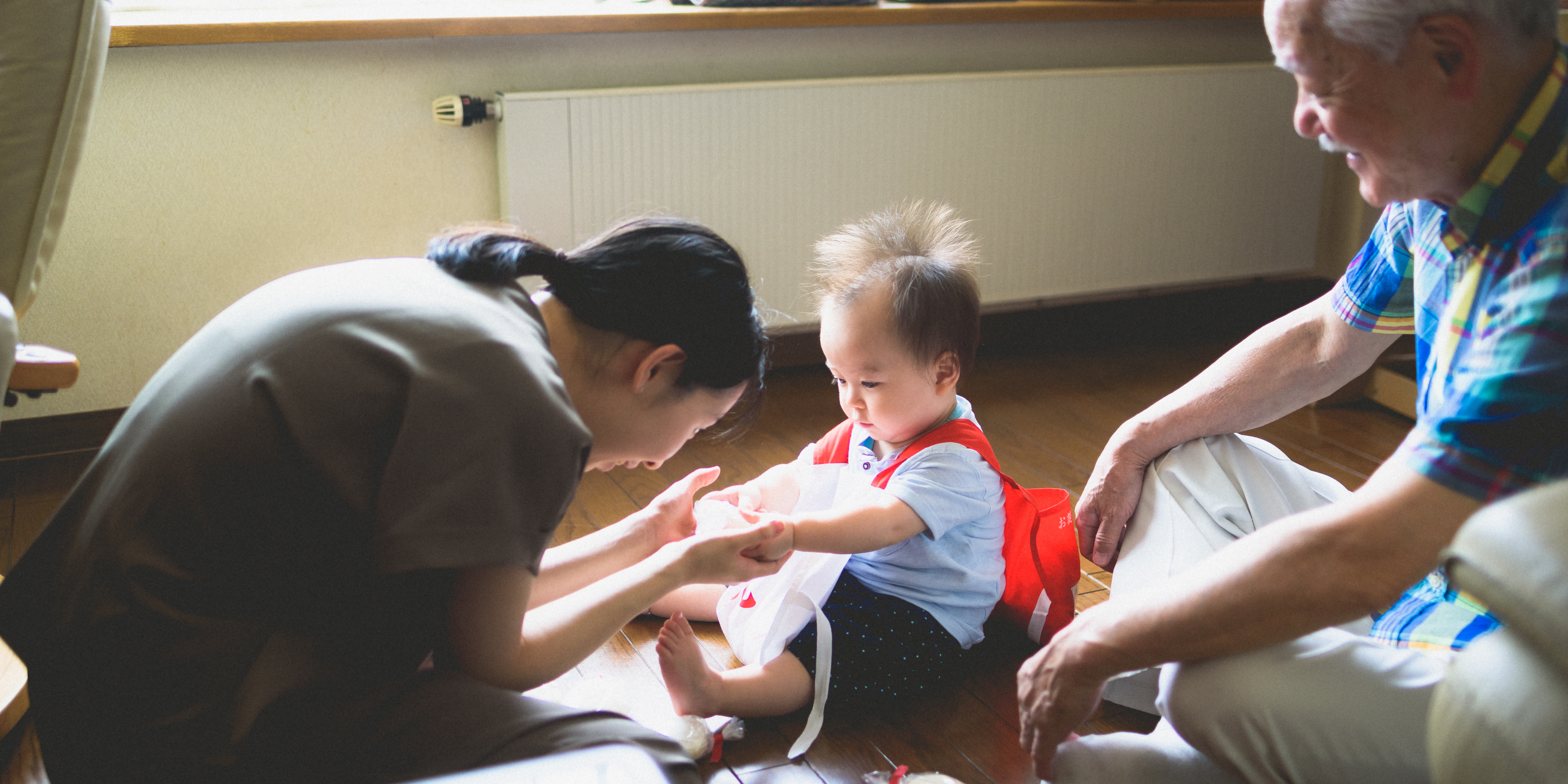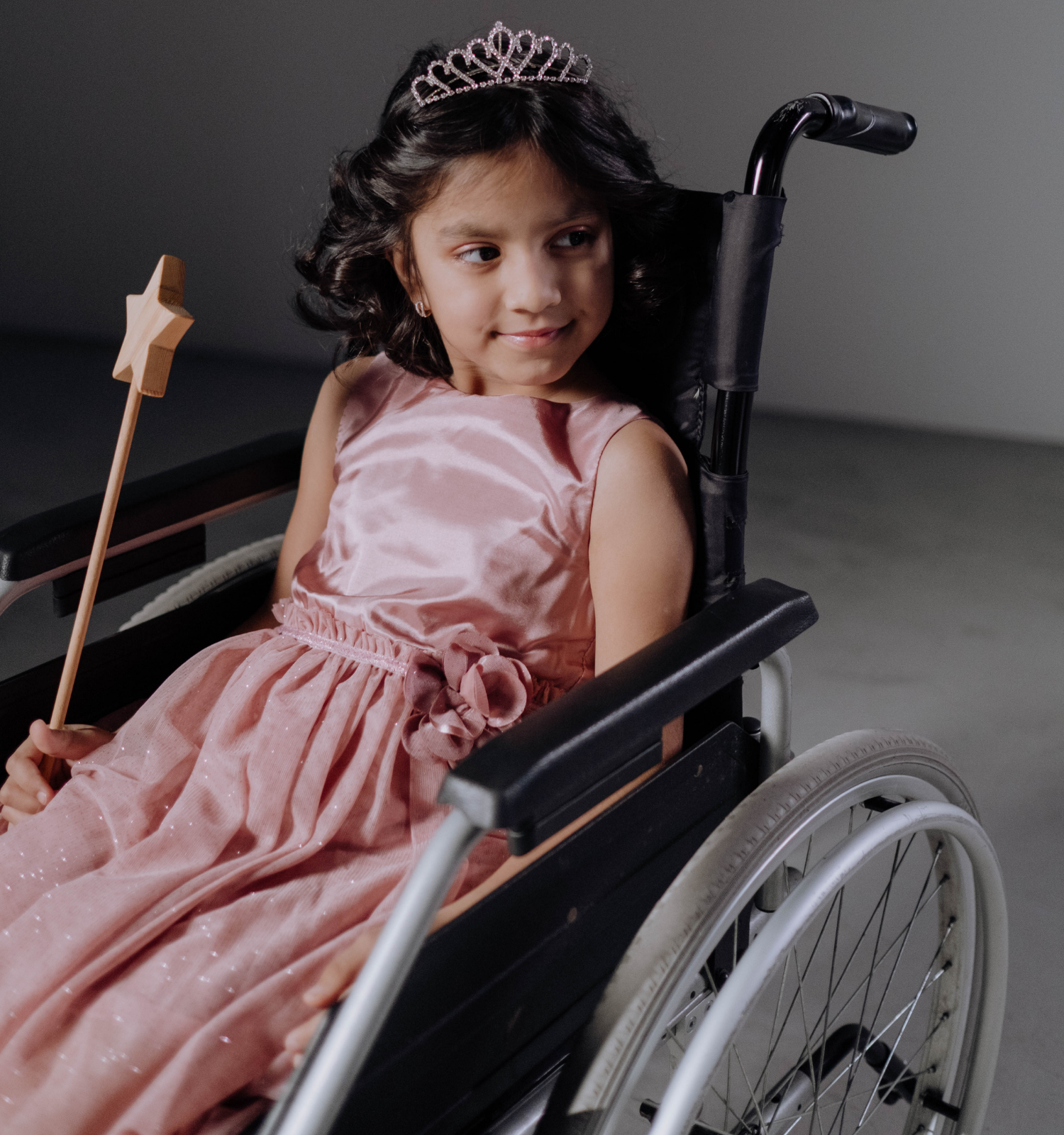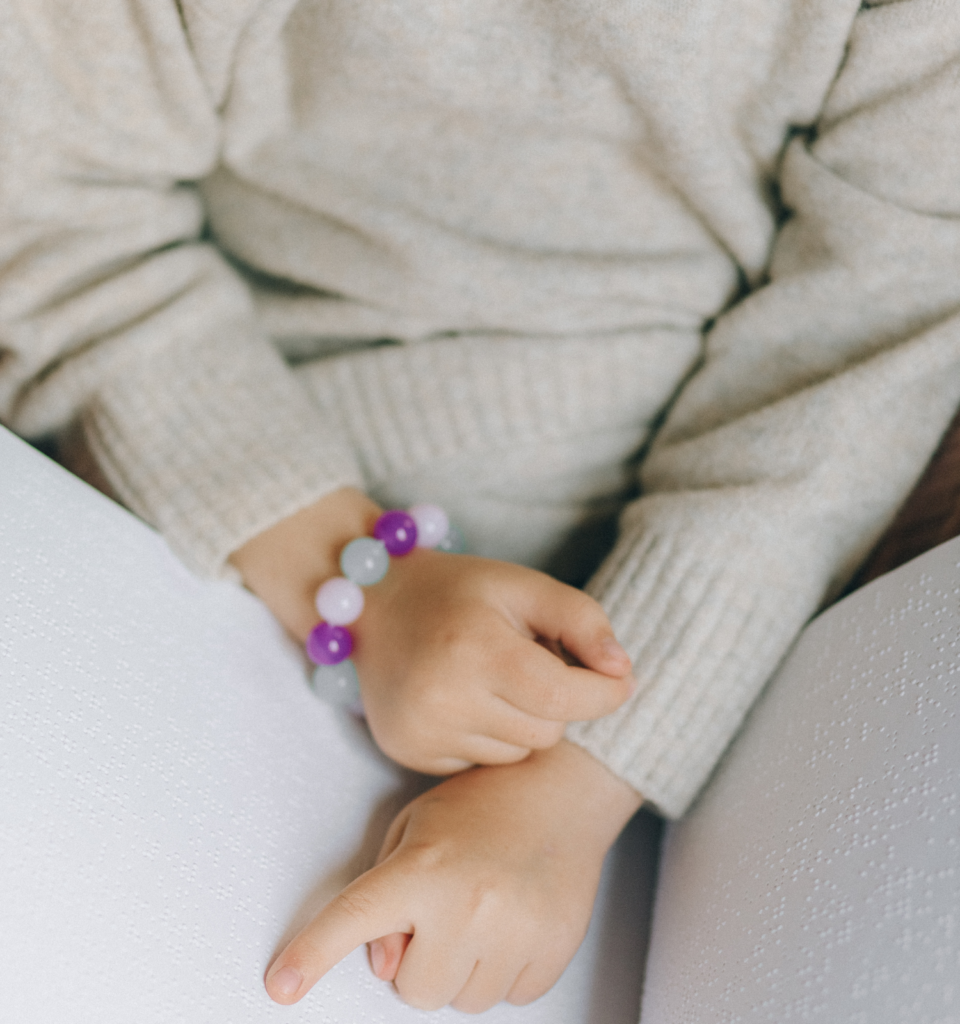
Author: Erika Augustine, MD, MS, Kennedy Krieger Institute
Reviewed: February 2022
SUMMARY
Batten disease refers to a group of disorders that affect the nervous system. These disorders are also known as neuronal ceroid lipofuscinoses, or NCLs. Each disorder also has a name related to the gene that causes that particular form of Batten disease. For instance, one form is called CLN1 disease because the gene mutation that causes it is in the CLN1 gene.
Batten disease is a rare, inherited condition that typically begins in childhood. There are many forms of Batten disease. In Batten disease, one of the genes CLN1 through CLN14 are affected by a mutation. This causes CLN1 disease, CLN2 disease, CLN3 disease, and so on. There are 13 recognized genes that cause Batten disease in total (CLN9 is no longer included).
JUMP TO
Disorder Overview:
Disorder Overview
DESCRIPTION
In Batten disease, a mutation in the one of the CLN genes means the body’s cells are unable to properly eliminate waste. This waste builds up in a part of the cell called the lysosome. The buildup can be seen under a microscope in certain skin cells and blood cells, and in cells from other organs.
The genetic changes and the waste buildup cause the body’s cells to function poorly. Some cells die. The cells of the brain, eyes, and heart are especially sensitive to this. The main symptoms of Batten disease come from cells in the brain, eyes, and heart that are not functioning well.
The severity of Batten disease can vary:
- More severe. In most forms, symptoms begin in childhood, worsen over time, and lead to death.
- Less severe. Milder forms of Batten disease are less common. These forms may have one or two main symptoms, such as blindness or impaired coordination. They are not fatal.
There is a treatment available for CLN2 disease that slows down the process of symptoms getting worse. Research is ongoing for almost all forms. However, at this time, there is not a disease-specific treatment for other forms. Still, there are medications and therapies that can help to treat symptoms and improve a patient’s quality of life.

SIGNS AND SYMPTOMS
People with Batten disease can develop:
- Blindness
- Seizures
- Speech delay
- Loss of the ability to communicate
- Problems with movement and coordination
- Loss of the ability to walk
- Unsteady walking
- Problems with learning
- Dementia or cognitive decline
- Mood and behavior changes
- Difficulty feeding
- Abnormal heart rhythms
There are certain groups of symptoms that lead doctors to consider a diagnosis of Batten disease. These include:
- Loss of developmental milestones (in infants or young children)
- Other neurological symptoms, in addition to:
- Seizures that are difficult to control with medication
- Multiple types of seizures
- Vision loss
- An unsteady walk that gets worse over time, in addition to abnormal images of the brain
Differences Between Forms of Batten Disease
All of the forms of Batten disease are similar in that they all include:
- Epilepsy
- Problems with motor function or movement
- Blindness
- Dementia
CAUSES
Batten disease is caused by a genetic change. There are at least 13 different genes associated with Batten disease. Each form is labeled by the name of the affected gene. For instance, if a child’s CLN1 gene is affected, the child will have the CLN1 form of Batten disease, or CLN1 disease.
Batten disease is typically inherited in an autosomal recessive manner. This means that two copies of a mutated gene are needed to cause the disease. In most cases, one copy is inherited from each parent. Parents, who have only one copy of the mutated gene each, are unaffected. All of the forms of Batten disease except for CLN4 disease are passed down in this way.
CLN4 is inherited in an autosomal dominant manner, so only one copy of the mutated CLN4 gene is necessary to cause disease.

LABORATORY INVESTIGATIONS
Diagnostic Testing
Genetic Testing
A diagnosis of Batten disease is primarily made through genetic testing. Genetic testing is needed for complete and accurate diagnosis. The most common genetic tests for Batten disease are:
- Targeted genetic panels. These can look for genetic changes in a specific set of genes.
- Whole exome sequencing. This looks for changes in most genes that might affect the body’s proteins. It is useful when doctors do not yet know which genes to target.
Sometimes, genetic testing does not give a definite diagnosis. Further, a genetic test may need to be repeated at a later date if:
- Testing methods improve
- Doctors learn more about the causes of a patient’s symptoms
Other Diagnostic Testing
Further Testing
Various other testing can help with:
- Understanding if a Batten disease diagnosis is possible
- Determining the extent of Batten disease
- Clarifying what symptoms are present and how to treat them
Some of these tests include:
Magnetic resonance imaging (MRI)
Ophthalmology (eye) exam
Electroencephalography (EEG)
Neuropsychological or cognitive testing
Electrocardiogram (ECG)
Each of these tests may need to be repeated. This is especially true if symptoms change or if families have new questions about treatment.
TREATMENT AND THERAPIES
The treatments used for the symptoms of Batten disease are the same as those used for other neurological disorders. The specific treatments, doctors, and therapists each child will need depends on the symptoms that child experiences.
Treatment Team
The team for treating children with Batten disease may include:
- Neurologists (brain doctors)
- Neuropsychologists (doctors who look at the brain, psychology, behavior and thinking processes)
- Ophthalmologists (eye doctors)
- Cardiologists (heart doctors)
- Physical therapists
- Occupational therapists
- Vision and mobility specialists
- Palliative care specialists
- Social workers
Medications and Therapies
Assistive Devices
Learning Braille
Treating CLN2 Disease:
For children with CLN2 disease who are at least 3 years old, there is treatment available. This medicine slows the worsening of the disease over time. This type of treatment is called a “disease-modifying therapy.”
There is an option available that replaces the enzyme that is missing in CLN2 disease. Discuss treatment options with your doctor to understand how they impact the disease outcome.
OUTLOOK
At this time, there are no cures for Batten disease. Occasionally, symptoms can be moderate in severity. However, they typically are serious, worsen with time, and cause early death. Treating the symptoms of Batten disease can be helpful in improving quality of life and preventing complications.

RELATED DISORDERS
All of the forms of Batten disease are classified within a broader family of conditions called “lysosomal storage diseases.” Some lysosomal storage diseases cause similar symptoms to Batten disease. Others cause symptoms related to the bones, the liver, or other organs, but spare the nervous system.
There are a number of other metabolic disorders that can cause symptoms similar to the Batten disease. These include:
- Leukodystrophies
- Niemann-Pick type C
- Rett syndrome
Resources
AllStripes
The mission of AllStripes is to unlock new treatments for people affected by rare disease. Serving as a research platform dedicated to rare diseases, AllStripes makes it easy for patients to contribute to new treatment research from home. There is no cost for patients, families, or advocacy organizations to participate, join research programs, or use the platform. AllStripes does the work to collect and analyze de-identified medical records to help power faster, better drug development. By bringing patients, doctors, and researchers together everyone learns from each other’s experiences to effectively push for better treatments across all rare conditions. They have over 40 active rare disease programs, which includes Batten disease, and they are adding more every month.
AllStripes partners with rare disease patient advocacy organizations and key opinion leaders to build the programs. Expert researchers produce original research insights and publications, as well as partner with academic institutions and pharmaceutical companies to make progress towards new treatments.
Disclaimer: AllStripes is a Public Benefit Corporation funded by private investors. Child Neurology Foundation does not specifically endorse products provided by AllStripes.
Beyond Batten Disease Foundation
Beyond Batten Disease Foundation (BBDF) was established to eradicate juvenile Batten disease by raising awareness and funds to accelerate research for a treatment or cure. BBDF has raised and invested over $35 million to support research to find a treatment for CLN3 Batten disease and will sponsor a clinical trial to open in 2021. In September 2021, BBDF formed a sponsorship agreement with Care Beyond Diagnosis (CBD) to establish internationally validated management guidelines for CLN3 Disease (juvenile Batten disease).

Batten Disease Support and Research Association
The Batten Disease Support and Research Association (BDSRA) is the largest support and research organization in North America for families affected by this disease. BDSRA is dedicated to funding research for treatments and cures, providing family support services, advancing education, raising awareness, and advocating for legislative action. There are similar family support groups in the United Kingdom, Australia, Finland, Germany, Norway, Denmark and other countries. BDSRA is happy to provide whatever support they can to families in countries without support organizations. BDSRA holds monthly virtual programming open to all Batten families to educate and foster community and hosts a private Batten Disease Facebook group with over 1,500 members. You can also engage with the community on their social media platforms and receive updates by subscribing to the Monthly Illuminator Newsletter.
One of the most important steps toward finding effective medical treatments for Batten disease and advancing clinical research is collecting as much data as possible and assembling it in a single database. Please visit the University of Rochester Batten Center’s Ongoing Studies page to get more information and learn how you can participate. The URBC has been recognized by the BDSRA as a Batten Disease Center of Excellence.
Rare Sisters Batten Foundation
The Rare Sisters Batten Foundation (RSBF) aims to further the development of medical research for treatments and cures for CLN3 Batten disease. RSBF also provides financial assistance to families with children diagnosed with Batten disease. Currently the grants are available to families in the U.S. and are awarded on a case-by-case basis. The RSBF board determines eligibility and funds are awarded to vendors, and not paid directly to individual families.
Child Neurology Foundation (CNF) solicits resources from the community to be included on this webpage through an application process. CNF reserves the right to remove entities at any time if information is deemed inappropriate or inconsistent with the mission, vision, and values of CNF.
Research
ClinicalTrials.gov for Batten Disease (birth to 17 years). These are clinical trials that are recruiting or will be recruiting. Updates are made daily, so you are encouraged to check back frequently.
ClinicalTrials.gov is a database of privately and publicly funded clinical studies conducted around the world. This is a resource provided by the U.S. National Library of Medicine (NLM), which is an institute within the National Institutes of Health (NIH). Listing a study does not mean it has been evaluated by the U.S. Federal Government. Please read the NLM disclaimer for details.
Before participating in a study, you are encouraged to talk to your health care provider and learn about the risks and potential benefits.
Family Stories
Meet children from around the world who have Batten disease on the Meet Batten Families pages of the Batten Disease Support and Research Association website. Some of the families have shared advice, challenges, and special memories of their children.
The Understanding Batten section of the Beyond Batten Disease Foundation website shares Family Stories and includes a World Map showing the location of other families affected by Batten disease.
The information in the CNF Child Neurology Disorder Directory is not intended to provide diagnosis, treatment, or medical advice and should not be considered a substitute for advice from a healthcare professional. Content provided is for informational purposes only. CNF is not responsible for actions taken based on the information included on this webpage. Please consult with a physician or other healthcare professional regarding any medical or health related diagnosis or treatment options.
References
References
Augustine EF, Adams HR, de Los Reyes E, Drago K, Frazier M, Guelbert N, Laine M, Levin T, Mink JW, Nickel M, Peifer D, Schulz A, Simonati A, Topcu M, Turunen JA, Williams R, Wirrell EC, King S. Management of CLN1 disease: International clinical consensus. Pediatr Neurol. 2021 Jul;120:38-51. https://doi.org/10.1016/j.pediatrneurol.2021.04.002. Epub 2021 Apr 9. PMID: 34000449.
Mink JW, Augustine EF, Adams HR, Marshall FJ, Kwon JM. Classification and natural history of the neuronal ceroid lipofuscinoses. J Child Neurol. 2013 Sep;28(9):1101-5. https://doi.org/10.1177/0883073813494268. Epub 2013 Jul 9. PMID: 23838030; PMCID: PMC3979348.
Mole SE, Schulz A, Badoe E, Berkovic SF, de Los Reyes EC, Dulz S, Gissen P, Guelbert N, Lourenco CM, Mason HL, Mink JW, Murphy N, Nickel M, Olaya JE, Scarpa M, Scheffer IE, Simonati A, Specchio N, Von Löbbecke I, Wang RY, Williams RE. Guidelines on the diagnosis, clinical assessments, treatment and management for CLN2 disease patients. Orphanet J Rare Dis. 2021 Apr 21;16(1):185. https://doi.org/10.1186/s13023-021-01813-5. PMID: 33882967; PMCID: PMC8059011.
